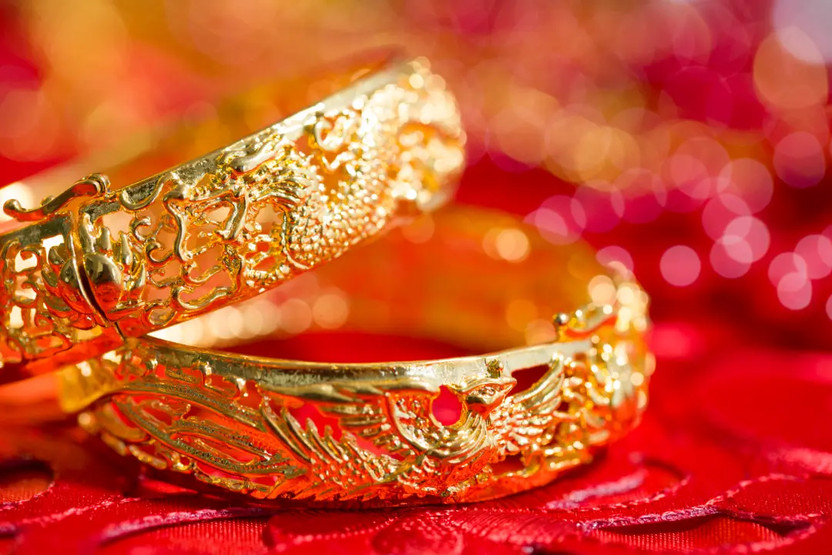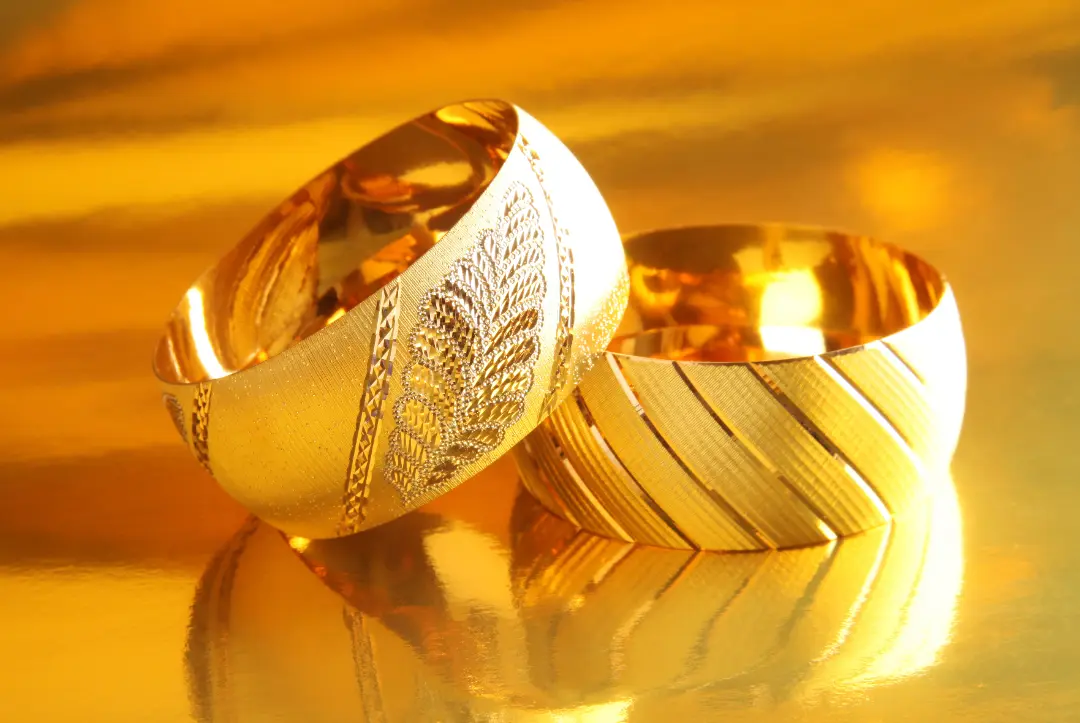Does Gold-Plated Jewelry Tarnish? Essential Tips to Keep It Shiny
Posted by Eddie R on Jun 6th 2025
Does gold-plated jewelry tarnish? Yes, and this article will show you why it happens and how you can maintain the shine of your gold jewelry.
Key Takeaways
- Gold-plated jewelry consists of a thin layer of gold over a base metal, requiring careful maintenance to prevent tarnishing.
- Tarnishing can be caused by exposure to moisture, air, and chemicals, emphasizing the importance of proper storage and cleaning practices.
- The longevity of gold-plated jewelry is influenced by its quality and care, with proper maintenance potentially extending its lifespan for several years.
Understanding Gold Plated Jewelry
Gold-plated jewelry, often referred to as plated jewelry, is a beloved option for those who desire the gleam of gold without the expense of solid gold. This type of jewelry is made from a base metal. A thin layer of gold is then applied to it using an electrochemical process. The base metals commonly used include brass, copper, and sometimes sterling silver, each chosen for its own unique properties and cost-effectiveness. Additionally, many consider gold a precious metal, enhancing its allure in the jewelry market.
The appeal of gold-plated jewelry lies not only in its affordability but also in its ability to mimic the look of solid gold pieces. The thin layer of gold provides a stunning finish that can make intricate designs pop, making such jewelry a popular choice for fashion-forward individuals. Additionally, many people appreciate the allure of real gold in their accessories, including a pure gold-plated necklace.
However, the thinness of the thinner layer of the gold layer compared to solid gold means that it requires more care to maintain its appearance, especially when considering a thicker layer.
Composition of Gold Plated Jewelry
Gold-plated jewelry is crafted by depositing a thin layer of gold onto a base metal underneath through a process known as electroplating. Key aspects of this technique include:
- Precise control over the thickness of the gold layer, which can range from a few microns to several microns thick.
- The durability of the jewelry is heavily influenced by this thickness.
- Thinner layers, such as thin gold plating, provide better resistance to wear and longer-lasting shine.
The choice of base metal is also crucial. Metals like brass and copper are commonly used due to their affordability and ease of plating. However, stainless steel is another excellent option because of its natural resistance to tarnishing and corrosion. The quality and type of the base metal, along with other metals, can significantly affect the longevity and appearance of the gold-plated piece.
Benefits of Gold-Plated Jewelry
One of the most significant benefits of gold-plated jewelry is its accessibility. Unlike solid gold pieces, which can be prohibitively expensive, gold-plated jewelry offers a similar aesthetic at a fraction of the cost. This makes it an attractive option for those who want to enjoy the luxury of gold without breaking the bank.

Why Gold Plated Jewelry Tarnishes
Tarnishing is a common issue that many gold-plated jewelry owners face. This process occurs when the metal underneath the thin layer of gold reacts with external elements, leading to discoloration and dull. The primary culprits behind this tarnishing process are moisture, air, and various chemicals, all of which can accelerate the degradation of the gold layer.
Understanding why gold-plated jewelry tarnishes is the first step in preventing it. Several factors, including exposure to sweat, humidity, and environmental elements, can cause the underlying metal to tarnish once the gold layer wears off. Proactive measures can significantly extend the life and shine of your gold-plated pieces.
Chemical Reactions and Exposure
Chemical exposure is one of the fastest ways to tarnish your gold-plated jewelry. Harsh chemicals found in everyday products like bleach, perfume, and hairspray can expedite the degradation of the gold layer. When these chemicals come into contact with your jewelry, they cause a chemical reaction that leads to tarnishing.
Removing your jewelry before engaging in activities involving chemicals can prevent damage to gold-plated jewelry. This includes showering, swimming, and exercising. By taking these precautions, you can help maintain the shine and integrity of your gold-plated pieces.
Environmental Factors
Environmental factors also significantly contribute to the tarnishing of gold-plated jewelry. Elements like sunlight, moisture, and air can cause reactions that degrade the gold layer over time. Prolonged exposure to sunlight can lead to discoloration, while moisture can accelerate tarnishing.
Proper storage and limiting exposure to these elements can mitigate these effects.
How to Prevent Tarnish on Gold-Plated Jewelry
Preventing tarnish on your gold-plated jewelry involves proper storage, avoiding harsh chemicals, and regular cleaning. These steps can significantly extend your jewelry’s lifespan and maintain its original shine.
Proper care preserves your jewelry’s value and maintains its original shine and luster.
Proper Storage Techniques
Storing your gold-plated jewelry correctly is crucial for maintaining its appearance and longevity. The best practice is to:
- Keep your pieces in a jewelry box lined with anti-tarnish fabric.
- Use this fabric because it helps absorb moisture.
- Prevent the jewelry from coming into contact with air and other elements that can cause tarnishing.
Additionally, keeping your jewelry in a cool place can further protect it from environmental factors. Proper storage techniques ensure your gold-plated pieces remain shiny and beautiful for years.
Avoiding Contact with Harsh Chemicals
Avoiding exposure to harsh chemicals is vital to prevent your gold-plated jewelry from tarnishing. Substances and actions to avoid include:
- Hair sprays
- Perfumes
- Lotions
- Cleaning agents
- Swimming in chlorinated water (so it’s best to remove your jewelry before taking a dip)
Using a protective lacquer or clear nail polish can create an added barrier against tarnishing. Regularly cleaning your jewelry with gentle solutions is equally important to maintain its original shine.
Regular Cleaning Practices
Regular cleaning is essential for preserving the gold layer on your jewelry. After wearing your gold-plated pieces, gently wipe them down with a soft cloth to remove any oils or residues. This simple step can go a long way in maintaining the shine and preventing tarnish.
For deep cleaning, choose safe cleaning agents. Options include:
- Warm water
- Mild soap
- Baking soda
- Vinegar: Avoid using abrasive materials or harsh chemicals, as they can damage the gold layer. Gentle cleaning methods are crucial for keeping your gold-plated jewelry in pristine condition.
Durability of Gold Plated Jewelry
The durability of gold-plated jewelry depends on several factors, including the quality of the gold plating, how often the jewelry is worn, and how well it is cared for. With occasional wear and proper maintenance, gold-plated pieces can last up to two years before showing signs of wear.
However, with meticulous care, it is possible to extend their lifespan even further.
Lifespan Expectations
Gold-plated jewelry can last for several years if it is well taken care of. Proper maintenance is essential for its longevity. For instance, 14k gold-plated pieces typically last several months to a few years, depending on factors like exposure to water, abrasives, or chemicals. The thickness of the gold layer and the level of care the jewelry receives also play a significant role in determining its lifespan.
Minimizing exposure to harmful elements and following best care practices can maximize the longevity of your gold-plated jewelry, allowing you to enjoy its beauty for longer.
Replating Options
When your gold-plated jewelry shows signs of wear, replicating can be an excellent option to restore its original sheen. Replating involves adding a new layer of gold over the existing one, effectively giving the jewelry a fresh look. This process can significantly extend the overall lifespan of your pieces, making them look as good as new.
Replating helps maintain the quality and aesthetic appeal of your gold-plated jewelry over time by replenishing the thin layer of gold. If you love a particular piece and want to keep it looking its best, consider having it replated by a professional jeweler.
Shop At Harlem Bling For the Best Quality Jewelry
Harlem Bling is renowned for its dedication to quality and craftsmanship. Here, we ensure our jewelry stands out in appearance and durability by prioritizing premium materials.
This commitment to quality is evident in every piece we produce, from intricate rings to stunning jewellery earrings and necklaces.
Quality Assurance
At Harlem Bling, we employ rigorous quality control measures to ensure that every piece of jewelry meets our high standards. Each item is crafted from high-quality materials like yellow gold and sterling silver, with meticulous attention to detail. This dedication to using superior materials and craftsmanship ensures that our jewelry is built to last.
Every piece undergoes thorough inspections to verify its quality before it reaches the customer. This ensures that you receive a product that meets our stringent quality requirements, providing you with a piece that you can cherish for years.
Customer Satisfaction
With over 100,000 satisfied customers, Harlem Bling has established a reputation for excellent service and high-quality products. Fast shipping, hassle-free returns, and flexible payment options further enhance the customer experience.
Positive feedback from customers underscores our brand’s commitment to delivering products that achieve the perfect balance between beauty and quality. So, whether you’re purchasing a new piece or seeking assistance, Harlem Bling’s customer service is always ready to help, ensuring a smooth and satisfying shopping experience.
Frequently Asked Questions
What causes gold-plated jewelry to tarnish?
Gold-plated jewelry tarnishes when exposed to moisture, air, and chemicals, leading to the degradation of the gold layer. Taking care to keep your jewelry dry and away from harsh substances can help prevent tarnishing.
How can I prevent my gold-plated jewelry from tarnishing?
To prevent your gold-plated jewelry from tarnishing, store it properly, avoid exposure to harsh chemicals, and clean it regularly. By following these simple steps, you can maintain its luster for a longer time.
What should I use to clean my gold-plated jewelry?
To clean gold-plated jewelry effectively, use warm water with mild soap, baking soda, and vinegar. After cleaning, ensure that you wipe it with a soft cloth for the best results.
How long does gold-plated jewelry last?
Gold-plated jewelry can last up to two years with proper care, though its durability varies based on the thickness of the gold layer and frequency of wear. Taking care of it will help maximize its lifespan.
Can gold-plated jewelry be replated?
Yes, gold-plated jewelry can be replated to restore its original shine and prolong its lifespan by applying a new layer of gold over the existing plating.
Conclusion
Gold-plated jewelry offers an affordable yet stylish alternative to solid gold. Understanding its composition and the factors that cause tarnishing can help you take proactive steps to maintain its shine.
With proper care, regular cleaning, and occasional replating, you can enjoy your gold-plated pieces for years. Our commitment to quality at Harlem Bling ensures that your jewelry remains a durable and beautiful addition to your collection.


